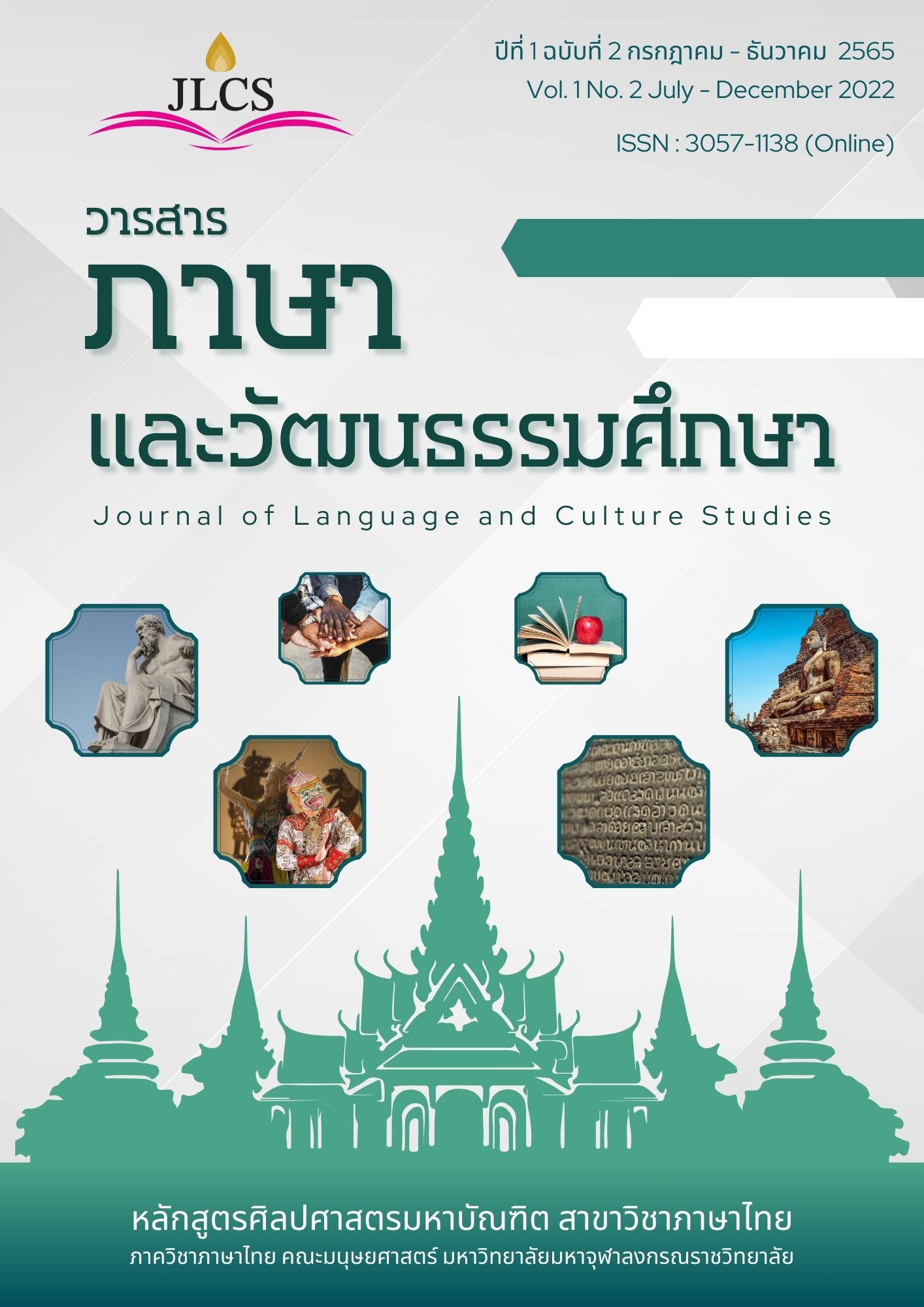ANALYSIS OF LANGUAGE USAGE IN THAI AUSPICIOUS PLANT NAMING: BELIEF AND MARKETING DIMENSIONS
Keywords:
Molam Sing, Language, Integration, Tradition, ContemporaryAbstract
This article aims to analyze language usage in Molam Sing performance, a popular Northeastern Thai folk entertainment that has adapted to modern times. The study focuses on Molam Sing performances in Northeastern Thailand. The findings reveal that the language used in Molam Sing combines traditional Isan dialect with standard Thai and foreign languages, particularly English, including transliteration, slang, and neologisms to communicate with modern audiences. Meanwhile, it maintains traditional verse structures and melodies, reflecting cultural adaptation while harmoniously preserving traditional essence.
References
จารุวรรณ ธรรมวัตร. (2558). หมอลำกับการเปลี่ยนแปลงทางสังคมและวัฒนธรรมอีสาน. สำนักพิมพ์มหาวิทยาลัยมหาสารคาม.
ปฐม หงษ์สุวรรณ. (2560). หมอลำในมิติสังคมร่วมสมัย. วารสารมนุษยศาสตร์และสังคมศาสตร์ มหาวิทยาลัยมหาสารคาม, 36(4), 145-159.
พัฒนา กิติอาษา. (2557). หมอลำซิ่ง: การปรับตัวของศิลปะการแสดงพื้นบ้านในกระแสความเปลี่ยนแปลง. สำนักวิชาเทคโนโลยีสังคม มหาวิทยาลัยเทคโนโลยีสุรนารี.
สุมิตร ปิติพัฒน์ และคณะ. (2559). วัฒนธรรมดนตรีอีสานร่วมสมัย. สำนักงานกองทุนสนับสนุนการวิจัย.
อรทัย เพียยุระ. (2561). ภาษาและวรรณกรรมในหมอลำอีสาน. คณะมนุษยศาสตร์และสังคมศาสตร์ มหาวิทยาลัยขอนแก่น.









